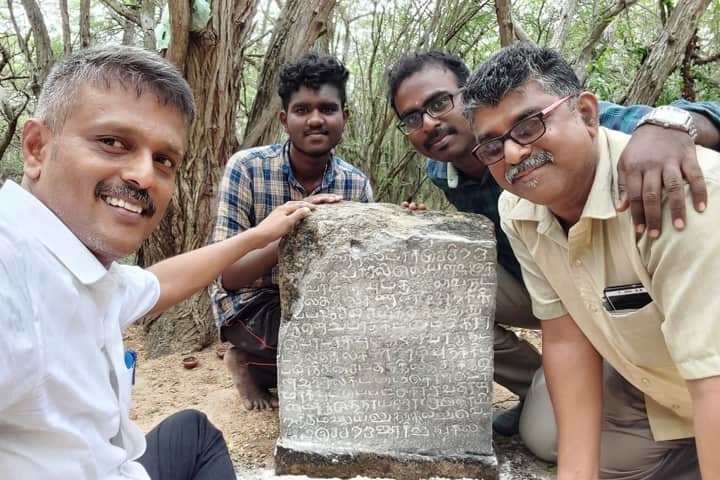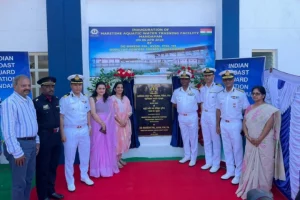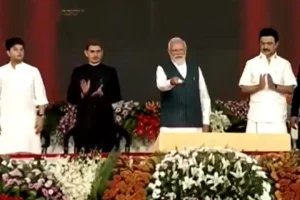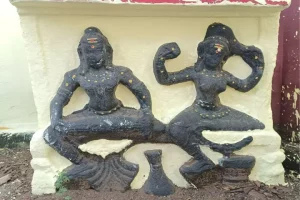The discovery of a 13th century lithic inscription on a four-sided stone has provided historians and students a glimpse of life in those times in Tamil Nadu. Information about this broken fragment of inscription at Chanavayal in Sivagangai district was provided by M. Ilangovan, an engineer to Manikandan, a research scholar in the Department of Ancient Science at Thanjavur Tamil University.
Sharing details about the inscription, Manikandan informed India Narrative that the broken slab inscription is four-and-a-half feet in height and its width is one-and-a-half feet. There are 114 lines on three sides of which 103 are eligible while there is complete defacement at the end of the inscription.
“It ends with the words Sri Maheswarar Raksha, that is invoking God’s protection,” he said.
The year of the inscription is 1222 AD and it belongs to the period when Maravarman Sundarapandiyan, a Pandyan king ruled the region. Incidentally, the Pandyas defeated the Cholas in 1219 and brought an end to their long rule over the region.
The information in the inscription mentions the purchase of land for the temple of Thiruthenkur Wodeyar Thirunageeswaramudaiya Nayanar of Thalayur Natu, Chittranur.
Interestingly, it also talks about how the agricultural produce on the land will be taxed. Sharing information on this Manikandan told India Narrative: “This inscription informs that for the land planted with Kuruvai paddy, one half of the duty tax will be taken and for the land planted with millet one quarter will be taken.”
Stressing on the importance of this inscription, Manikandan said it needs more investigation. The team which undertook the study of this lithic inscription included Manikandan, Elangovan, S. Sakul Hameedu and A. Thanapathi Ashwin.




















